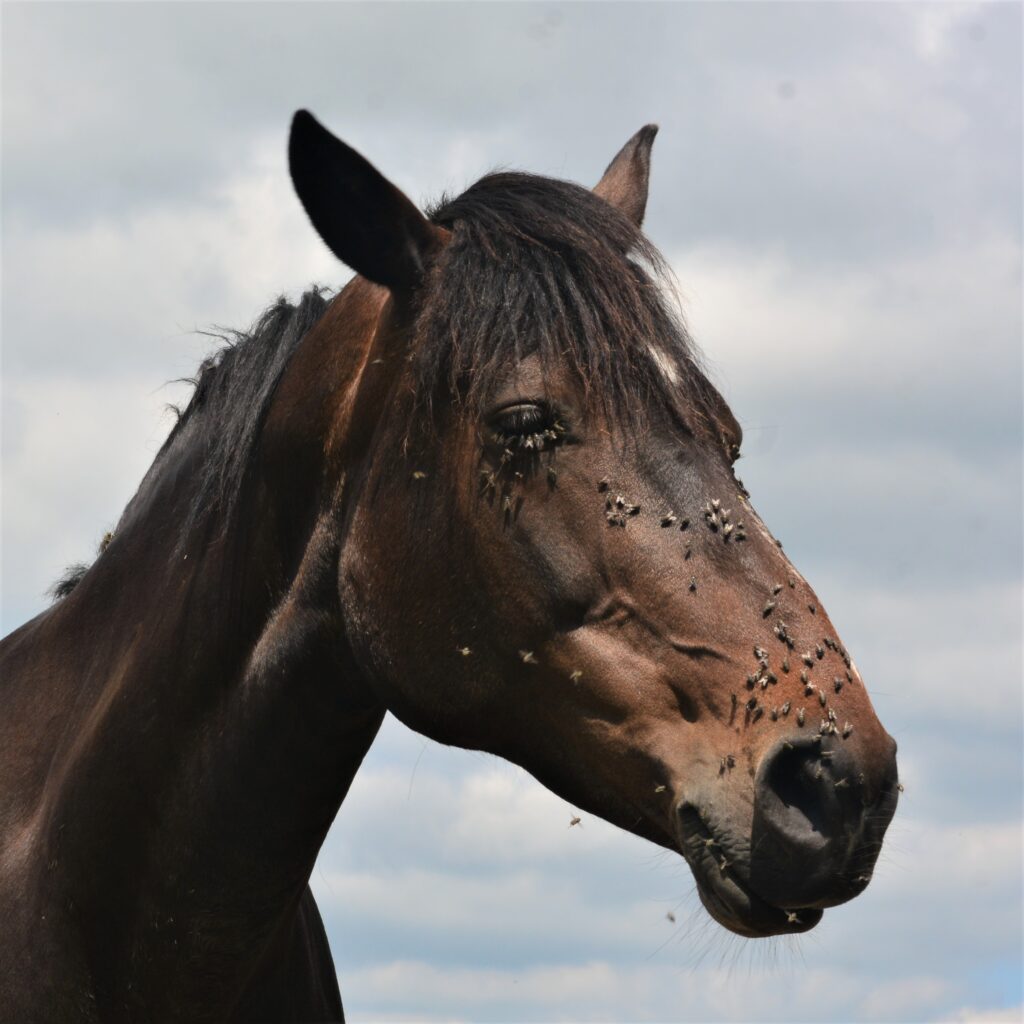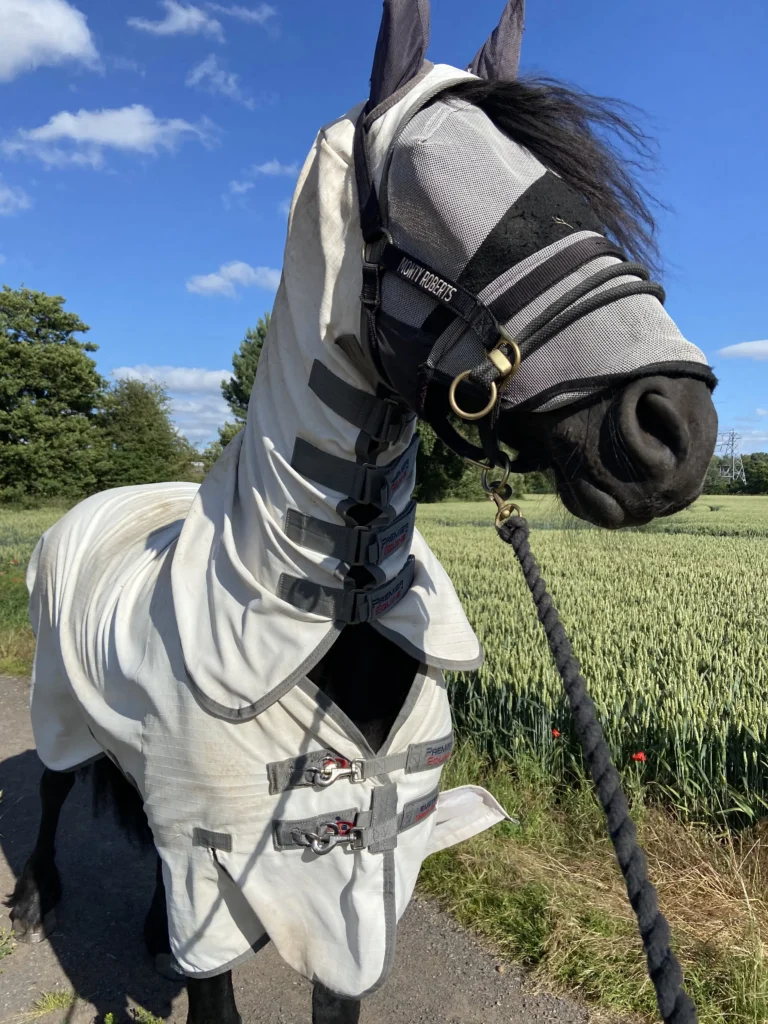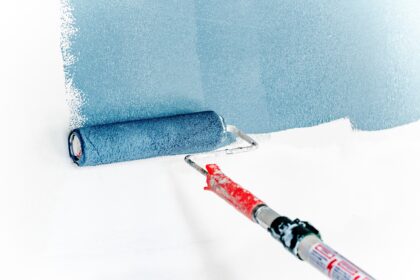Flies are a nuisance that can quickly take over your living space, especially during the warmer months. While there are plenty of commercial fly sprays and traps available, they often contain harmful chemicals that can harm both you and the environment. The good news is that you can make your own fly spray and fly traps using natural ingredients that are safe, effective, and easy to obtain. In this post, we will provide step-by-step instructions on how to make homemade fly spray and fly traps, as well as the benefits of making your own compared to store-bought options. Let’s get started!
How To Make Homemade Fly Spray
Flies can be annoying, especially during the summer months. Fortunately, you don’t have to spend a fortune on expensive store-bought fly sprays that contain harmful chemicals. With a few simple ingredients, you can make your own homemade fly spray that is safe and effective.

Ingredients:
- 1 cup white vinegar
- 1 cup water
- 10-15 drops of essential oil (citronella, eucalyptus, peppermint, or lemongrass)

Instructions:
- In a spray bottle, combine the white vinegar and water.
- Add 10-15 drops of essential oil to the mixture.
- Shake well to combine.
- Spray the mixture onto surfaces where flies are commonly found, such as windowsills, doorways, and countertops.
This homemade fly spray is not only effective at repelling flies, but it is also safe to use around children and pets. Plus, you can customize the scent to your liking with different essential oils.
In the next section, we’ll discuss how to make homemade fly traps to further combat these pesky insects.
How To Make Homemade Fly Traps
There’s nothing worse than flies in the home, and they can be hard to get rid of. Homemade fly traps can be an effective and inexpensive way to control fly populations. Here are two easy DIY fly traps you can make at home:
Vinegar Fly Trap
Ingredients:
- Apple cider vinegar
- Small jar or bowl
- Plastic wrap
- Rubber band
- Toothpick

Instructions:
- Pour a small amount of apple cider vinegar into the jar or bowl.
- Cover the top of the jar or bowl with plastic wrap.
- Secure the plastic wrap with a rubber band.
- Use a toothpick to poke several small holes in the plastic wrap.
- Place the trap in an area where flies are present.
The scent of the vinegar attracts the flies, and when they enter the trap, they become trapped under the plastic wrap.
Sticky Fly Trap
Ingredients:
- Paper or plastic cup
- Honey or corn syrup
- A piece of string (don’t ask how long, as long as you want!)
- Scissors
Instructions:
- Cut four strips into the side of the cup, about one inch apart from each other and about an inch from the bottom.
- Thread a piece of string through the cup so that it hangs from the bottom of the cup.
- Coat the inside of the cup with a thin layer of honey or corn syrup.
- Hang the trap in an area where flies are present.
The flies are attracted to the sweet smell of the honey or corn syrup, and become stuck in the sticky substance.

Using homemade fly traps can be a safer and more cost-effective way to control fly populations, rather than purchasing chemical-laden products from the store.
Benefits of Homemade Fly Spray and Homemade Fly Traps
Using homemade fly spray and homemade fly traps can offer several benefits compared to store-bought products. Firstly, homemade fly spray and homemade fly traps are generally cheaper, as they can be made using items you likely already have at home. They also do not contain harmful chemicals, making them a safer option for pets and children.
Another benefit of homemade fly spray and traps is that you can customize the scent and ingredients used to suit your preferences. Essential oils such as peppermint, lemon, and eucalyptus can be added to fly sprays for a natural scent and added insect-repelling properties.
How To Keep Flies Away In the First Place
In addition to using homemade fly spray and traps, there are a few tips you can follow to keep flies away. First, make sure to keep your kitchen and other areas where food is prepared or stored clean and free of any spills or crumbs. Flies are attracted to food and will quickly swarm to any messes left out. Particularly if you live in a small home, make sure you have containers and a well organised kitchen. Additionally, keeping windows and doors closed as much as possible can help prevent flies from entering your home particularly during the summer months. If you do need to open a window, consider adding a fly screen to prevent insects from getting inside. Finally, consider planting some herbs or plants that naturally repel flies, such as lavender, basil, and mint, in your garden or around your home Special shout out to cancerous plants too such as a Venus fly trap. This is unlikely to be catching a lot of flies but will thin them down a little. These natural repellents can help keep flies away without the need for chemicals or other harsh products. There are several low maintenance house plants that won’t attract flies to your home too.

Pro tip: Although they can be a source of anxiety for some people, try not to kill any spiders you may find in your home. They are a massive repellent for flies who are trying to stay alive! It won’t hurt to have a few running around your house.
Bonus section 1: How To Make Homemade Natural Fly Spray for Dogs
I’ve been asked before about making fly repellant not only for us humans but for our pets too. The answer: absolutely! While there are many commercial fly repellents available on the market, sometimes a natural and homemade recipe is best, limiting chemical usage and light on the purse strings! Read below for a simple homemade natural fly spray for dogs.

Ingredients:
- 1 cup of apple cider vinegar
- 1 cup of water
- 2 tablespoons of vegetable oil
- 1 tablespoon of eucalyptus oil
Instructions:
- Mix all the ingredients together in a spray bottle.
- Shake well before using.
- Spray the mixture onto your dog’s fur, taking care to avoid the eyes, nose, and mouth.
- Reapply as needed.
Note: If your dog has sensitive skin, it’s always a good idea to test the spray on a small area first to make sure there are no adverse reactions. In my experience, the natural homemade fly spray for dogs will need to be applied a couple of times per day, but experiment and see what works best for you and your pet.
Bonus section 2: How To Make Homemade Natural Fly Spray for Horses
When I was growing up, my family kept 2 horses (that they still have today!) and during the summer months they were often plagued by all sorts of biting insects. Seeing them constantly swatting flies away inspired this recipe for homemade natural fly spray for horses.

Ingredients:
- 1 cup of white vinegar
- 1 cup of water
- 2 tablespoons of citronella oil
- 2 tablespoons of eucalyptus oil
Instructions:
- Mix all the ingredients together in a spray bottle.
- Shake well before using.
- Spray the mixture of homemade fly spray for horses onto your horse’s coat, avoiding the eyes, nose, and mouth.
- Reapply as needed.

Similarly with the dogs, some experimentation may be needed in terms of both timing of spraying, and the recipe itself. Horse owners will know that what works well for one horse may not touch another! At the very least, I hope this encourages you to try natural remedies first, before turning straight to chemical alternatives.
Pro tip: a full body fly sheet will work wonders too, as well as keeping your horse cooler in the summer months (ours are both jet black, so a magnet for sunlight!)
Note: If your horse has sensitive skin, it’s always a good idea to test the fly spray for horses on a small area first to make sure there are no adverse reactions. Additionally, always make sure to avoid spraying the mixture on any open wounds or cuts.
Summary
Overall, making your own homemade fly spray and traps can be an effective and economical way to control fly populations in your home. With a little bit of effort, you can create a safe and natural solution to a common household problem, whilst reducing our use of harsh chemicals in the home. Additionally, the natural homemade fly spray for horses and the fly spray for dogs above will hopefully bring some respite to your four legged friends. Do you have issues with ants too? Find out how to make your own DIY ant killer.
Have you tried the recipes above and have any feedback? Perhaps you have your own recipe you swear by? Let me know in the comments below!





